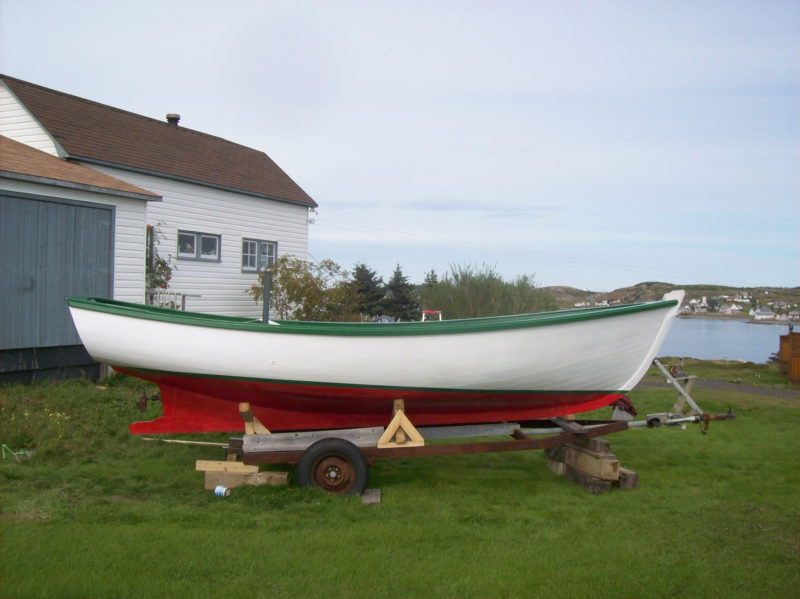 Alf Manuel
Alf ManuelWith his newly finished boat out of the shop, it’s easy to see why Alf was drawn to the trap skiffs of his youth.
Alf Manuel has deep roots in Twillingate, a small town on the northeast coast of Newfoundland. Seven generations of his family have made their home there, and it was only in Alf’s lifetime that a causeway and bridge, built in 1973, connected it by road to the rest of Newfoundland. Naturally, boats and boatbuilding are steeped in his bloodline.
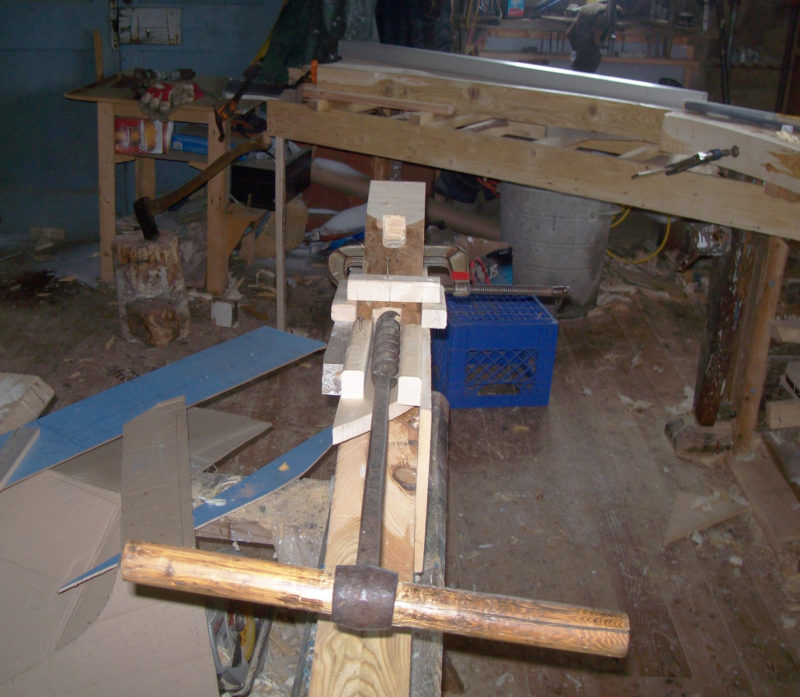 Alf Manuel
Alf ManuelAn eye auger would be a curiosity or an antique to most, but to Alf, it’s a tool that hasn’t yet outlived its usefulness. The axe in the background to the left belonged to Alf’s father, but it is not the one Alf used to make toy boats.
As a boy, he would sneak an axe from his father’s shop and chop a boat out of a scrap of wood. There were a number of boatbuilders near his home, and he was inexorably drawn to their shops to watch them at work. At 19, he built his first boat, a plywood skiff, and “it worked out all right,” he says, so he went to a trade school to learn more. Now 80 years old, he works in the shop that had belonged to his father, grandfather, and great-grandfather. He has a long string of wooden boats, up to 56′ long, to his credit and is a highly regarded boatbuilder.
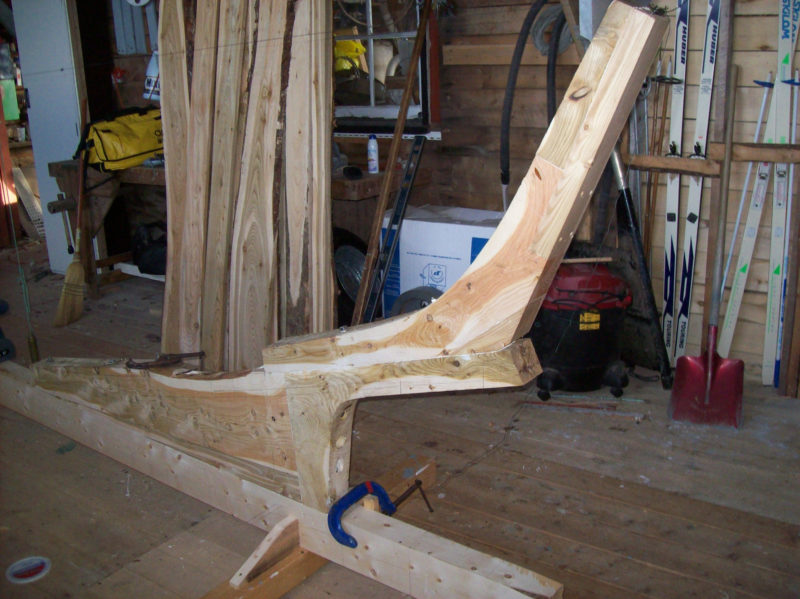 Alf Manuel
Alf ManuelAlf used crooks to to a create a strong structure at the stern of the skiff. Against the back wall he has two ways of coping with the Newfoundland winter: a snow shovel and cross-country skis.
His most recent boat was inspired by the trap skiffs that he used to watch as they worked the Twillingate waters. They ranged from 28′ to 34′ long; the smaller ones, with a crew of two aboard, were also used for hand-lining cod in the fall when the lobstering season closed. The original skiffs were more boat than he needed, so he had in mind to build one 21′ long. There were neither surviving boats nor plans for the trap skiffs, so he started with a half model, carving the shape from memory. Lofting followed, and he drew full-sized lines for a skiff 21′ long with a beam of 6′6″. He gathered materials for the build. From a local sawmill he got live-edge Newfoundland black spruce for the planking and black spruce timbers for the keel; with the help of his son and grandson, he cut tamarack crooks for the stem and frames. Stainless-steel fastenings would be used throughout. Wanting to power the boat in the traditional way, Alf acquired a single-cylinder make-and-break engine.
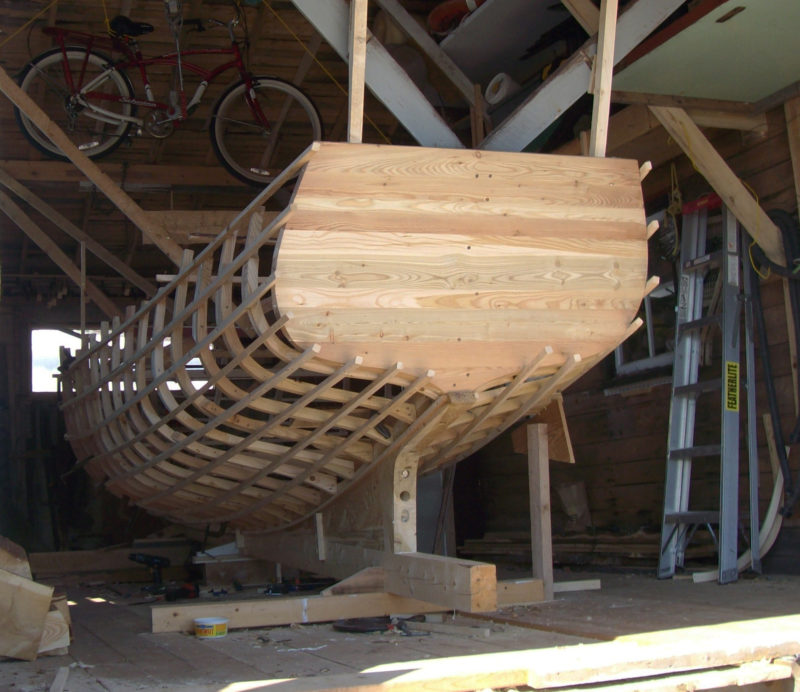 Alf Manuel
Alf ManuelThe hull, even as a lattice of sawn frames and temporary battens, already shows the handsome shape that began as a half-hull trap skiff carved from memory.
He built the skiff over the course of two years, working only during the winters, often wearing a heavy coat and wool gloves while tongues of wind-driven snow lapped at the floor beneath the shop doors. He assembled the keel and frames upright, and then as the planking proceeded, he tilted the nascent hull to angles convenient to the work he needed to do.
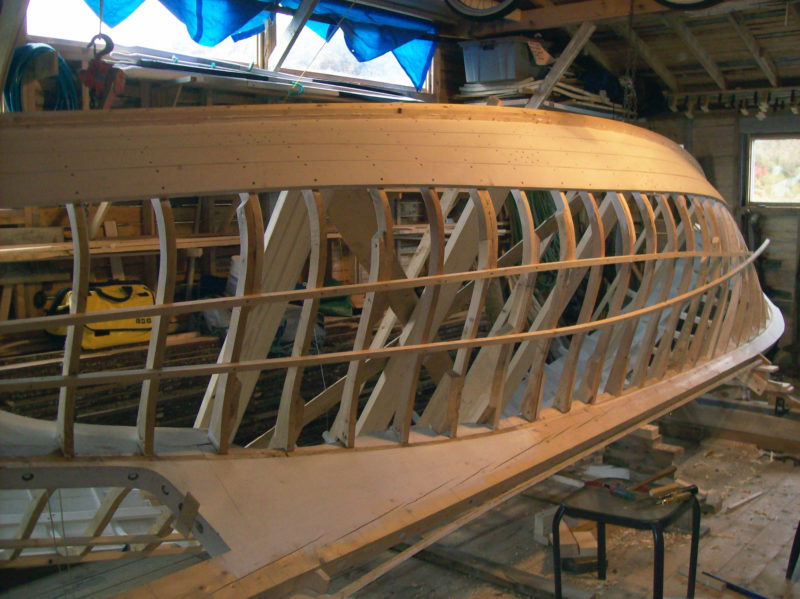 Alf Manuel
Alf ManuelRather than crawl under an upright hull to spile and install the garboards, Alf set it on its side. The first half-dozen planks from the sheer down hold the shape.
After Alf launched the boat, the 4-hp Acadia motor he had installed developed a number of problems, so he switched to a more reliable and more powerful 13-1/2-hp Volvo Penta two-cylinder diesel. It pushes the skiff along at about 5 knots.
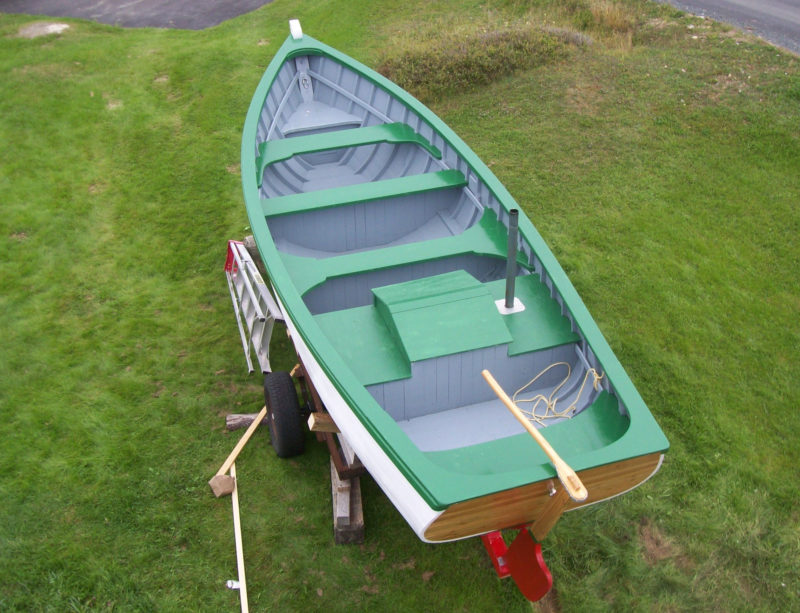 Alf Manuel
Alf ManuelThe finished hull has lodging knees on two of the thwarts to stiffen the hull. The enclosure aft conceals the make-and-break engine initially installed; its vertical exhaust pipe is to starboard.
Alf does day cruises and some recreational cod fishing in the waters around Twillingate. Notre Dame Bay, which surrounds the North and South Twillingate islands, is cradled in Newfoundland’s ragged and island-speckled northeast coast and has no shortage of nooks and crannies to explore. In the late spring and early summer, the harbors and coves may be free of ice, but icebergs, spawned by Baffin Island and Greenland and carried south by the Labrador Current, are regular visitors, so numerous that Twillingate bills itself as the Iceberg Capital of the World. Verdant hills and wandering mountains of brilliant white ice make a spectacular seascape for Alf’s cruising.
 Stephanie Manuel
Stephanie ManuelAlf, his wife, son, and daughter-in-law motor out of Twillingate’s inner harbor. The make-and-break’s exhaust pipe is gone and the skiff is now powered with a diesel engine with a wet exhaust above the waterline on the starboard side.
Alf has spent a lifetime building and using wooden boats, but the boy who was often scolded by his mother when he came home with pant cuffs wet after wading from shore with his axe-hewn boats remains every bit as fascinated by them.![]()
Do you have a boat with an interesting story? Please email us. We’d like to hear about it and share it with other Small Boats Magazine readers.
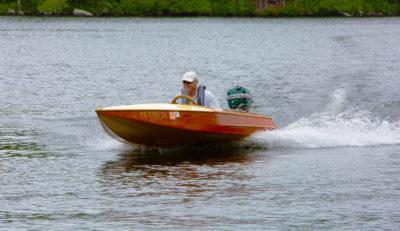
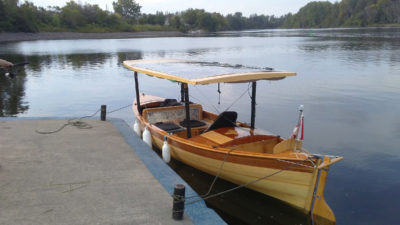
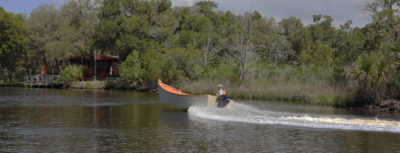
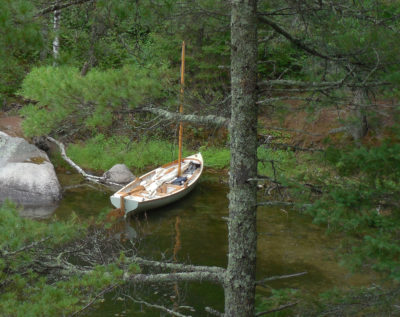
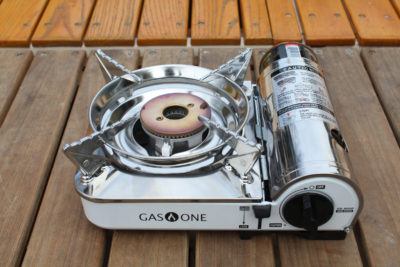
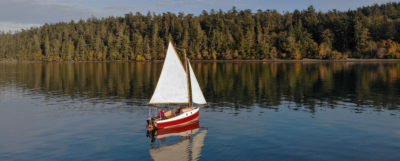

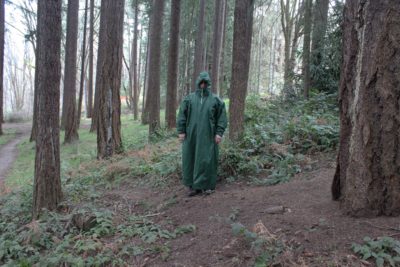
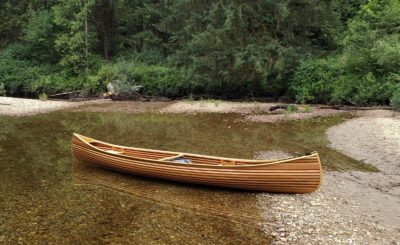

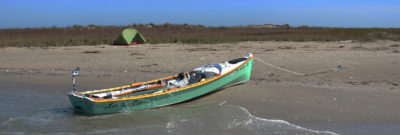
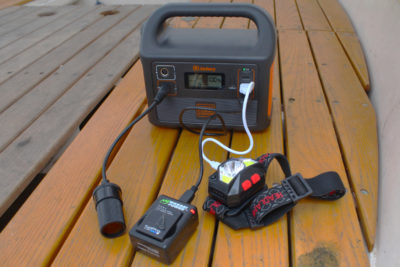


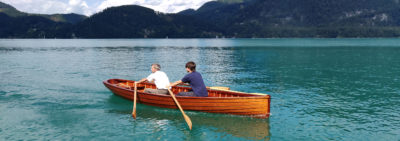
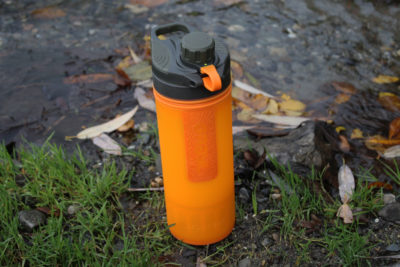
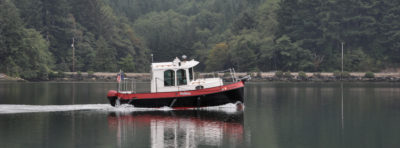
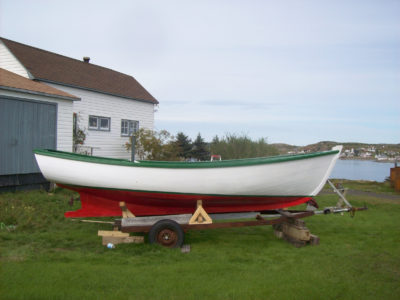



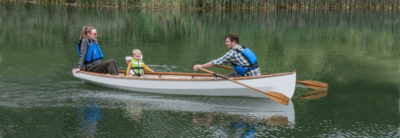
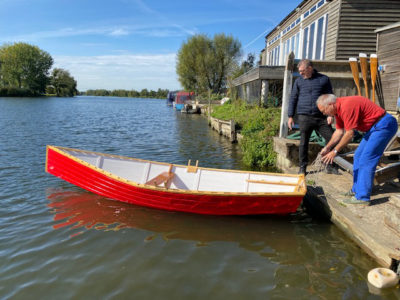
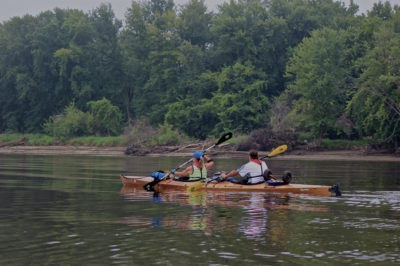

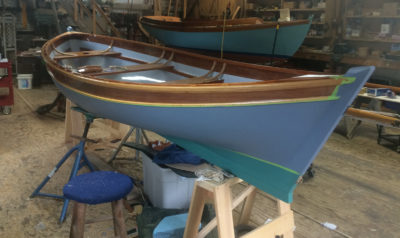
What a wonderful boat. I am envious. It would have been a treat to hear the Acadia with the dry exhaust.
The shape of this skiff reminds me of the Poulsbo boat of Northwest Washington State.
In 1963 the Navy sent me to Argentia, Newfoundland, to run diesel generators for NAVFAC base. My friend Paul Snider bought an old trap skiff and we went native. Going over to Fox Harbor, St. Kirans, and Marisheen Island on our 3-day breaks. When we had trouble with the make-and-break the live-heres told us to put a dime between the points to adjust the spark- when it did not help we went back to them- they said we were doing it wrong -using a Yankee dime instead of a Canadian one. After that we had no problem and it only cost us a fifth of Bacardi.
Excellent article and very inspirational!
Great article, there must be a great deal of satisfaction in completing a project like that
Has anyone ever considered making plans for Alf’s skiff? If not, what boat would be a near equivalent?
On vacation three years ago, I happened to stay in a cottage next to Alf’s home. I’m a wooden boat enthusiast.He gave me a tour of his shop and had a boat under construction that filled the entire shop. He told me he cuts the wood for his boats from his land. It was great to meet him and, like all Newfoundlander, he was very welcoming and friendly. Glad to see you are still building, Alf!
Cap’n Rick– no offense but your term “live-heres” is not a Newfoundland term (at least one I am familiar with). It is “liveyers” , and refers to the people or settlers that live in the “outport” communities.
Hope you enjoyed your time with us, have you been back to visit? The communities on Marisheen Island are now resettled.